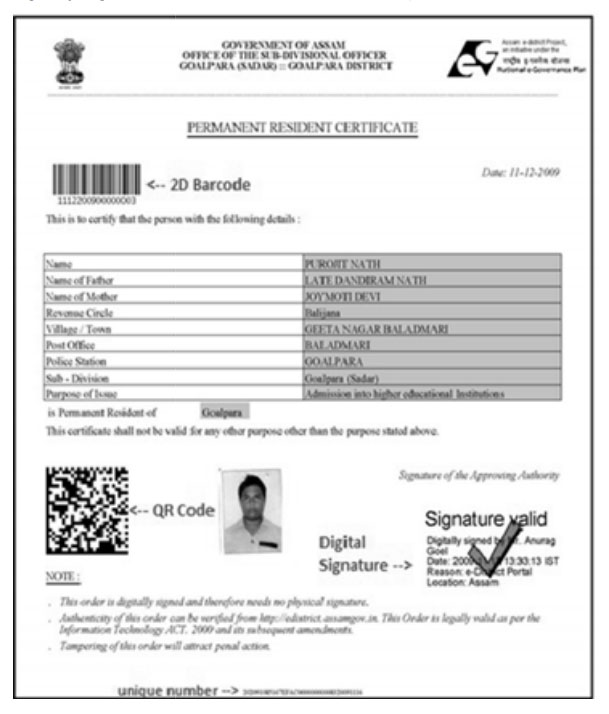Digital signature certificate format
A digital signature certificate (DSC) is a tool that helps to ensure the authenticity and integrity of electronic documents. It is a digital equivalent of a handwritten signature that allows users to sign electronic documents securely. The DSC is issued in a specific format that contains key information about the certificate holder and the issuing authority. In this article, we’ll explore the digital signature certificate format and what it contains.
Digital Signature Certificate Structure
A digital signature certificate contains three main components: the certificate holder’s information, the certificate issuer’s information, and the digital signature itself. The certificate holder’s information includes the name, email address, and public key of the certificate holder. The certificate issuer’s information includes the name, email address, and digital signature of the issuing authority.
Public Key Infrastructure (PKI)
A digital signature certificate is based on a public key infrastructure (PKI), which is a system that uses public and private keys to encrypt and decrypt digital data. The public key is included in the DSC, while the private key is kept by the certificate holder for secure electronic transactions.
Certificate Authority (CA)
A digital signature certificate is issued by a trusted third-party organization called a Certificate Authority (CA). The CA verifies the identity of the certificate holder and issues the DSC after ensuring the authenticity and integrity of the information provided.
DSC Formats
There are different formats of digital signature certificates, including X.509, PKCS#7, and PKCS#12. X.509 is the most commonly used format for digital signature certificates, and it is compatible with most electronic signature software.

Certificate File Extensions
The digital signature certificate is stored in a file with a specific extension. The X.509 format uses the .cer, .crt, or .pem extension, while PKCS#7 uses the .p7b or .p7c extension, and PKCS#12 uses the .pfx or .p12 extension.
Certificate Revocation
In case the certificate holder’s private key is compromised or lost, or if the certificate holder no longer needs the DSC, the certificate can be revoked by the issuing authority. The revoked certificate is added to a Certificate Revocation List (CRL) or Online Certificate Status Protocol (OCSP), and any attempts to use the certificate will be rejected.
Related Articles
Conclusion
A digital signature certificate is an essential tool for secure electronic transactions and document management. The DSC format contains crucial information about the certificate holder and the issuing authority, and it is based on a public key infrastructure. Understanding the digital signature certificate format is important to ensure the authenticity and security of electronic transactions and documents.
FAQs – Frequently Asked Questions
Q: What is a digital signature certificate format?
A: A digital signature certificate format is a standardized format for a digital certificate that is used to identify a person or organization and verify the authenticity of digital documents.
Q: Why is a digital signature certificate format important?
A: A digital signature certificate format is important because it provides a way to verify the identity of the signer of a digital document and ensure the document has not been altered since it was signed.
Q: What are the different types of digital signature certificate formats?
A: There are several types of digital signature certificate formats, including X.509, PGP, and S/MIME.
Q: How does a digital signature certificate format work?
A: A digital signature certificate format contains information about the identity of the signer, including their name, public key, and the name of the issuing authority. When a digital document is signed, the signature is created using the signer’s private key and can be verified using their public key, which is included in the certificate.
Q: How can I obtain a digital signature certificate?
A: You can obtain a digital signature certificate from a trusted certificate authority (CA) by submitting an application and providing proof of your identity.
Q: Are there different levels of digital signature certificates?
A: Yes, there are different levels of digital signature certificates based on the level of identity verification required. These include Class 1, Class 2, and Class 3 certificates.
Q: Can a digital signature certificate be used for multiple documents?
A: Yes, a digital signature certificate can be used to sign multiple documents, as long as the signer’s private key remains secure and the certificate has not expired.
Q: How long is a digital signature certificate valid?
A: The validity period of a digital signature certificate varies depending on the type of certificate and the issuing authority, but typically ranges from one to three years.
Q: What is the difference between a digital signature certificate and a digital signature?
A: A digital signature certificate is a digital certificate that verifies the identity of the signer, while a digital signature is the actual signature applied to a digital document using a private key. The digital signature cannot be created or verified without the digital signature certificate.
